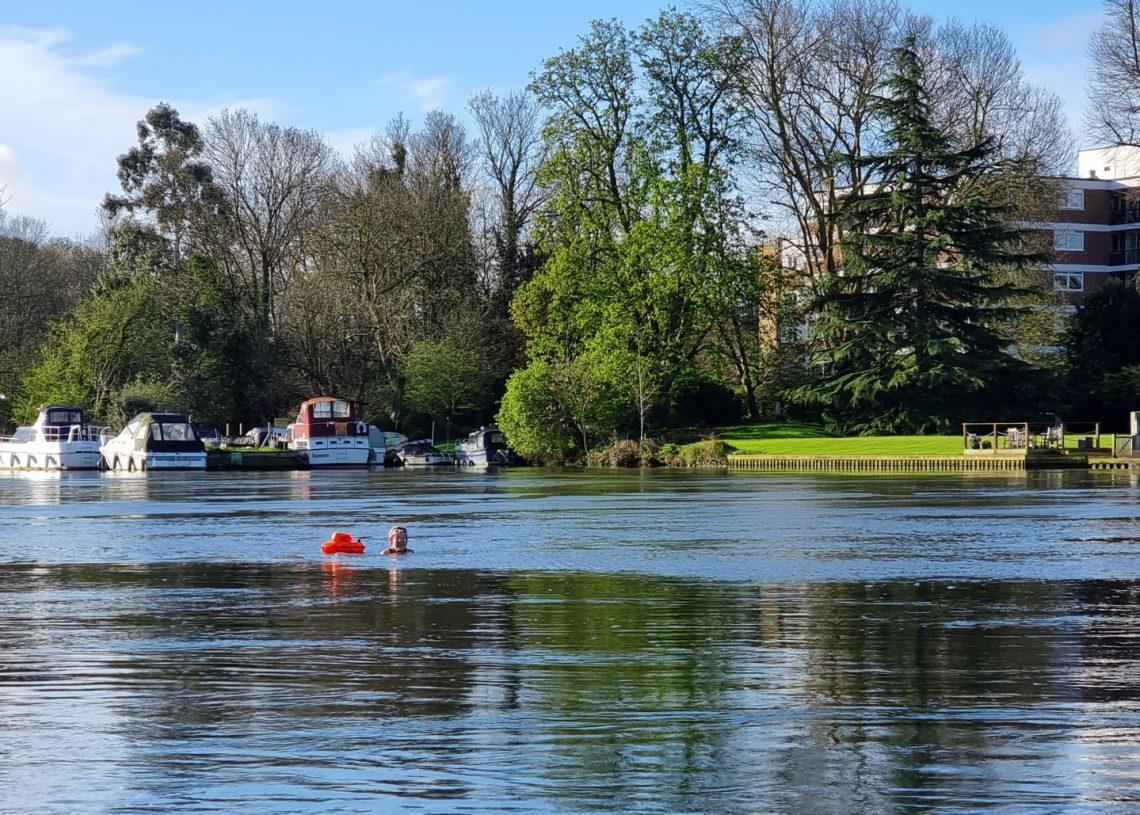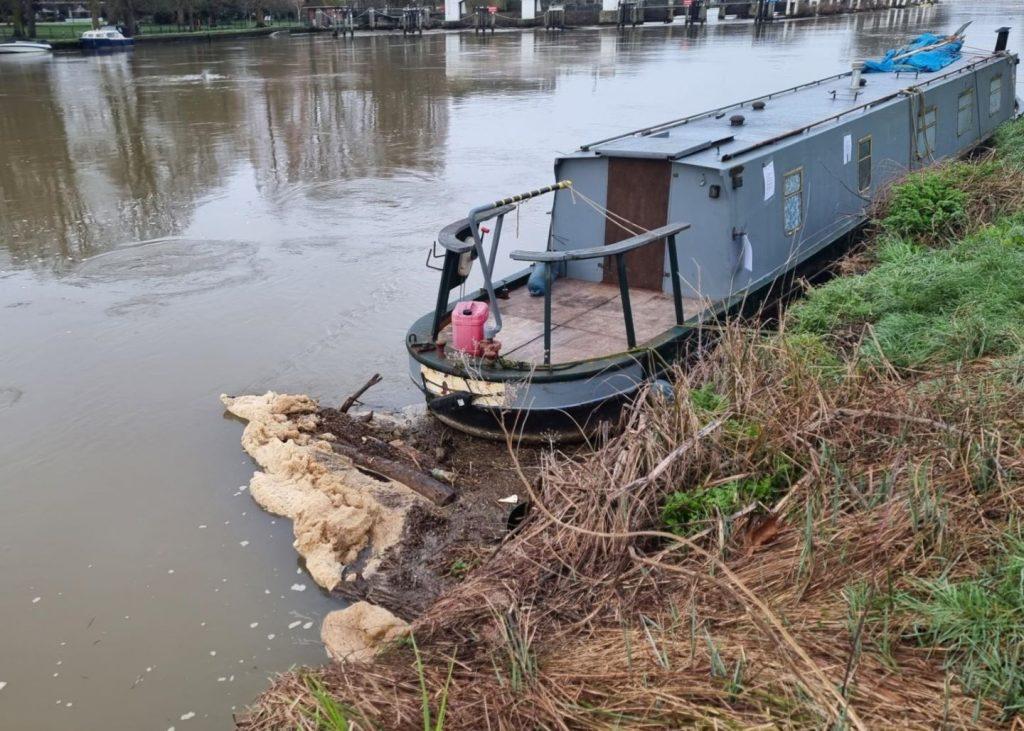
Outdoor Swimming and the #Sewagescandal – how bad is It?
You can keep outdoor swimming despite the flood of bad news, says Simon Griffiths
Large patches of brownish foam swirled in the eddies. The water was turbid. We know Thames Water had discharged untreated sewage into the river further upstream. It had rained for most of the past 48 hours.
We decided not to swim.
Sensible, you may think. But the rest of the day felt flat. I missed the energising effect of a cold plunge and the uplifting experience of immersing myself in nature at sunrise.
Later we discovered that the foam was probably caused by an algae bloom. It starts off white but picks up silt from the river that colours it brown. Likewise, the turbidity of the water was due to the run-off rather than sewage. I regretted not swimming.

I rarely skip a swim but I’ve noticed increasing numbers of swimmers struggle with water quality concerns. The onslaught of mainstream media stories about failing water companies and crumbling sewage treatment infrastructure is making an impact. Even when swimmers are happy to swim they face resistance from well-meaning friends and relatives. Non-swimmers love to send us news stories about sewage spills and rowers getting E-coli poisoning.
Natural environments
The two questions that I’d love to answer are (1) how bad is it really and (2) is it getting worse?
Unfortunately, I can’t give a definite answer to either. Nor, I expect, can anyone. But we can provide some context.
It’s important to appreciate that all open water is a natural environment. Even if you removed all human-derived pollution you would still encounter pathogens. It’s impossible to swim in open water without risk.
We should also recognise that nature has its own water cleaning and filtration mechanisms. Ultraviolet light from the sun kills bacteria. Reedbeds filter out pollutants. Silt settles out of slow-moving water.
The damage we cause to water quality comes from multiple sources. Sewage pollution is in the news now but agricultural runoff is a culprit too. Watercourses close to main roads also get polluted from road run-off, which carries in oil and particles of rubber from tyres.
It sounds bad because it is: no river in England is in good overall health according to the Rivers Trust.
But none of this tells us about the risk to swimmers. It’s clear we’re exposed to more pollutants than we’d find in rivers in their natural state, but does that make it twice as dangerous to swim or 100 times? We don’t know.
We don’t even have a baseline measure for our risk of getting ill in water that’s not contaminated. It’s not like, say, driving, where you can look up casualty rates per billion vehicle miles (413 casualties per billion in Great Britain in 2022 since you ask). We can’t say that we expect a certain number of cases of diarrhoea and vomiting for every 100 hours of swimming. Nobody is collecting data in that detail. Surfers Against Sewage run a sickness reporting scheme but we don’t have a denominator to calculate overall risk.
Amid all this uncertainty, we reach for anecdotes to try to make sense of it. We focus on the stories we hear of the few people who were unlucky to get ill rather than looking at the thousands of people who swim without incident. We recognise there is a risk but, being unable to quantify it, assume it’s higher than it is.
Is it getting worse?
Over the past few years, sewage pollution has risen up the political agenda. The narrative that privatised water companies have under-invested in infrastructure and loaded themselves up with debt while enriching their foreign shareholders is compelling and worrying. The deluge of negative stories paints a picture of decline. We asked the Rivers Trust if the quality of our rivers is getting worse. The answer, sadly, is yes, albeit with some caveats about a lack of data and historical monitoring.
It’s a bleak picture and will put some people off swimming. However, for most of us, I believe the benefits still outweigh the risks. To be clear, this is not proven scientific fact. We cannot fully quantify either the risks or the benefits. It’s what I feel based on my own swimming experience and observations of fellow swimmers.
Also, consider the historical context. In 1957 the Thames was declared biologically dead and unable to sustain life. But thanks to better regulation and action by community groups and campaigners, it has been brought back to life. Where I swim near Teddington Lock, I frequently see herons, cormorants, Canada geese, Egyptian geese, various species of duck, great crested grebes and coots. I occasionally spot a kingfisher. We sometimes see seals. I’ve watched anglers pull out large and healthy-looking fish. The river may not be in optimal health but it’s far from dead.
Hours of incident-free swimming
I swim in the Thames, summer and winter, in all conditions. So do many people I know. We’ve been doing it for years. We’ve had very few incidents of illness that we could attribute to swimming, and those have been mild and self-limiting. Of course, you hear stories of people who have become seriously ill but the numbers are tiny in comparison to the millions of people who swim. This suggests there is a small risk of getting mildly ill and an even smaller risk of getting seriously ill. Weigh this against the health, fitness, wellbeing and fun benefits of outdoor swimming, which are pretty much guaranteed.
Also keep in mind that there are risks to not swimming. Unless you find an equivalent activity (which will also have a risk) your fitness will decline, with all the unpleasant consequences that can bring.
It’s enough to convince me, although I appreciate you may have a different risk tolerance or be under greater pressure from friends and family. I would also advise caution if you were immunocompromised or have an underlying condition that might make it harder to deal with a stomach bug.
Finally, cleaning up our waterways will be a long-term project. If you wait until the job is done, it may be too late. I want to enjoy swimming now and I encourage you to do the same. The more people use our water, the greater the political pressure to look after it becomes.
Some tips to reduce your risk of getting ill
- Pick your spot – avoid entering the water next to or immediately downstream of any sewage discharge points (for the Thames you can find most of these on their EDM map).
- Use your judgement – if it smells bad, looks grey or there are obvious signs of sewage pollution, don’t swim.
- Don’t swallow the water – I often swim head-up breaststroke in the river, especially after heavy rain when the pollution risk is higher.
- Rinse after swimming – I bring a bottle of fresh water to the river and use it to rinse off as soon as I exit.
- Disinfect your hands – one of the benefits of the pandemic was that I stocked up on hand gel.
- Use tools such as the SAS Safer Seas and Rivers app to monitor discharges near your swimming spot.
- Swim at designated bathing spots or at commercial venues where the water quality is monitored.
- Don’t panic – if you do get ill after swimming, it may be unpleasant but it will most likely be mild and not last long. If concerned, dial 111 (in the UK) for advice.








